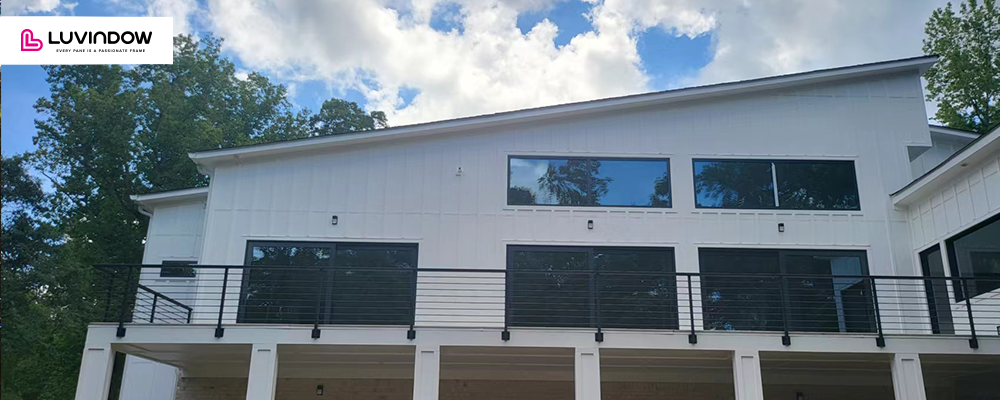Choosing Windows and Doors for Colonial Architecture: A Comprehensive Guide
Colonial architecture is a popular style that dates back to the 1600s, and is characterized by its symmetrical design and simple yet elegant aesthetic. When it comes to choosing windows and doors for a colonial-style home, it's important to consider the historical context of the architecture, as well as the functionality and design of the products. In this guide, we'll explore the key factors to consider when selecting windows and doors for colonial architecture.
Historical Context
When selecting windows and doors for a colonial-style home, it's important to consider the historical context of the architecture. Colonial homes were typically constructed during the 17th and 18th centuries, when wood was the primary building material. Windows were typically small, with multiple panes of glass, while doors were solid wood and often adorned with intricate moldings and carvings.
While modern windows and doors may incorporate new materials and design elements, it's important to select products that maintain the traditional aesthetic of colonial architecture. This can be achieved through the use of wood or wood-look materials, as well as by incorporating traditional design elements such as divided-lite windows and decorative moldings.
Materials
When it comes to colonial architecture, the material of the windows and doors plays an important role in maintaining the authentic look of the building while also providing the necessary functionality. There are a variety of materials available for windows and doors, and each has its own advantages and disadvantages.
Wood and Composite: Wood and composite materials are a popular choice for colonial homes as they offer the most authentic look and feel. They are also highly energy efficient, as they provide excellent insulation and can help to reduce heating and cooling costs. However, they require regular maintenance to prevent warping, rotting, or other types of damage caused by exposure to the elements.
Vinyl and Fiberglass: Vinyl and fiberglass materials are a popular choice for those who want a low-maintenance option that also provides good energy efficiency. They are highly durable and require minimal maintenance. Vinyl and fiberglass windows and doors also come in a wide variety of colors and styles, allowing for a customizable look that can fit with any colonial architecture.
Thermal Break Aluminum and Other Metals: While not as energy efficient as wood or composite materials, thermal break aluminum and other metal materials are durable and low-maintenance. They are also a good option for those looking for a sleek, modern look. However, they may not provide the same level of insulation as other materials, so they may not be the best choice for extreme climates.
It is important to note that the material of the windows and doors will affect their energy efficiency. Homeowners should check for Energy Star certification and other industry associations such as the National Fenestration Rating Council (NFRC) to ensure that the windows and doors meet energy efficiency standards.
By considering the different materials available for windows and doors, homeowners can choose the best option that meets both their aesthetic and functional needs while also ensuring energy efficiency.
Functionality
In addition to maintaining the traditional aesthetic of colonial architecture, it's important to select windows and doors that are functional and meet the needs of modern living. Double-hung windows are a popular choice for colonial homes, as they allow for easy operation and ventilation. Casement windows can also be used, particularly in areas where the windows need to open outward to maximize airflow.
When it comes to doors, traditional solid wood doors can be heavy and difficult to operate. A more practical choice for modern living is a door with a solid core and a wood-look finish. This provides the traditional look of a solid wood door, while offering greater durability and ease of operation.
Design
The design of windows and doors in a colonial-style home should reflect the symmetrical and balanced aesthetic of the architecture. This can be achieved through the use of evenly spaced windows and doors, as well as by incorporating traditional design elements such as shutters and decorative moldings.
In addition, it's important to consider the color and finish of the windows and doors. White is a traditional color for colonial architecture, but other muted colors such as beige and gray can also be used to complement the natural surroundings.
When selecting windows and doors for a colonial-style home, it's important to work with a windows and doors supplier who understands the historical context of the architecture and can provide products that meet the functional and aesthetic needs of modern living. Look for a supplier who offers a wide range of materials and designs, as well as installation services to ensure a seamless and efficient process.
Conclusion
Make sure to consider the style and design of your home when selecting windows and doors. Double-hung and casement windows are popular choices for colonial-style homes, while panel doors and French doors can add elegance and charm to the overall look.
Be sure to check for energy efficiency ratings from organizations such as the National Fenestration Rating Council (NFRC) and Energy Star. These ratings can help you determine which windows and doors will best meet your energy-saving needs while also helping you save money on your utility bills.
Finally, work with a reputable windows and doors supplier who can provide you with the knowledge, expertise, and quality products you need to make the right choices for your home. With the right guidance and selection, you can enjoy beautiful, energy-efficient, and secure windows and doors that will enhance the timeless beauty of your colonial-style home for years to come.



 Picture Windows
Picture Windows Single Double Hung Windows
Single Double Hung Windows Tilt & Turn Windows
Tilt & Turn Windows Sliding Windows
Sliding Windows Bi-Fold Windows
Bi-Fold Windows Gliding Patio Doors
Gliding Patio Doors Bi-Fold Doors
Bi-Fold Doors Lift and Slide
Lift and Slide  Entry Doors
Entry Doors Swinging Doors
Swinging Doors